Author: EVAI

Review: 2025 Audi Q6 E-Tron charges ahead of the rest
- Q6 E-Tron EV is Audi’s first on PPE platform shared with Porsche
- Arrives before the end of the year in Q6 and SQ6 forms
- California drive suggested around 300 miles from 100 kwh isn’t a stretch
- Roomy, comfortable interior and good ride quality; quirky regenerative braking
With its 2025 Q6 E-Tron lineup, Audi is helping solve a pesky logic problem that has plagued the whole round of electric sport-utility vehicle entries from German luxury brands over the past few years.
SUVs are today’s family vehicles of choice. And luxury brands love pointing out that time is the new luxury.
Then, why are so many luxury electric SUVs time bandits, leaving you to spend more time in the outer fringes of big-box parking lots charging up for the next stretch on the highway—while those in the mass-market Teslas, Hyundais, and Kias come and go?
The German luxury establishment might finally get it and be fixing this conundrum with next-generation EVs. But Porsche aside, Audi’s the only one here right now with circa-20-minute charging in a roomy-but-not humongous two-row luxury vehicle.
Sign up for Newsletter
In a first drive experience last week in the 2025 Audi Q6, I didn’t get far enough to warrant a road-trip charge; but it helped underscore that this new vehicle family is generally far better at avoiding a charging stop than its Q4 E-Tron and Q8 E-Tron counterparts.
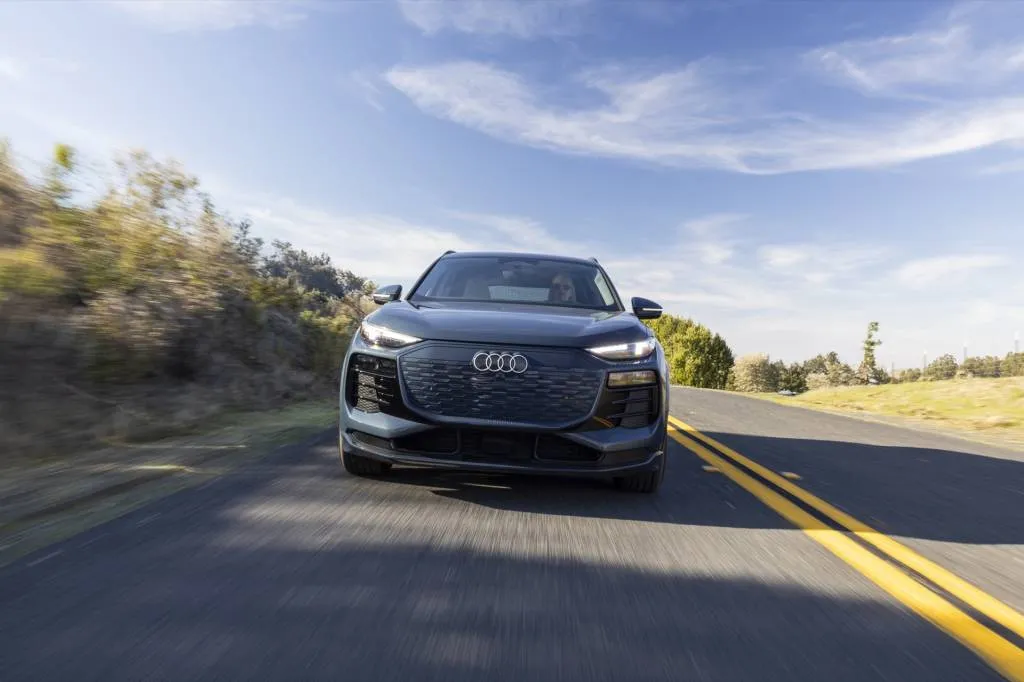
2025 Audi Q6 E-Tron
Q6 E-Tron family is mostly over the 300-mile mark
The Audi Q6 E-Tron family’s driving range spans from 321 miles for the rear-wheel-drive Q6 E-tron, to 307 miles in E-Tron quattro (dual-motor all-wheel-drive) form, to 275 miles in SQ6 E-Tron quattro form.
Over an 83-mile drive with the Q6 E-Tron quattro and a 102-mile drive in the SQ6—both emphasizing a combination of tightly curved Sonoma two-laners with short stints on US-101, we averaged 3.0 miles per kwh overall. That’s an excellent result considering we were also driving to explore the ride, handling, and overall dynamics of the vehicle—I’ll get to that shortly—without a lot of heed to efficient driving. It should also be noted that we saw 2.9 mi/kwh in the Q6 E-Tron and 3.1 mi/kwh in the SQ6—perhaps more an indication of some additional afternoon traffic than anything else.
Audi says that compared to the Q8 E-Tron, the Q6 E-Tron has a 33% improvement in performance and a 30% reduction in energy consumption. A shift to an 800 volts for the battery and propulsion system, borrowing wisdom from the Porsche Taycan and related Audi E-Tron GT, is at the core of the boost in efficiency and range, which makes the charging gains all the more meaningful.
Sign up for Newsletter
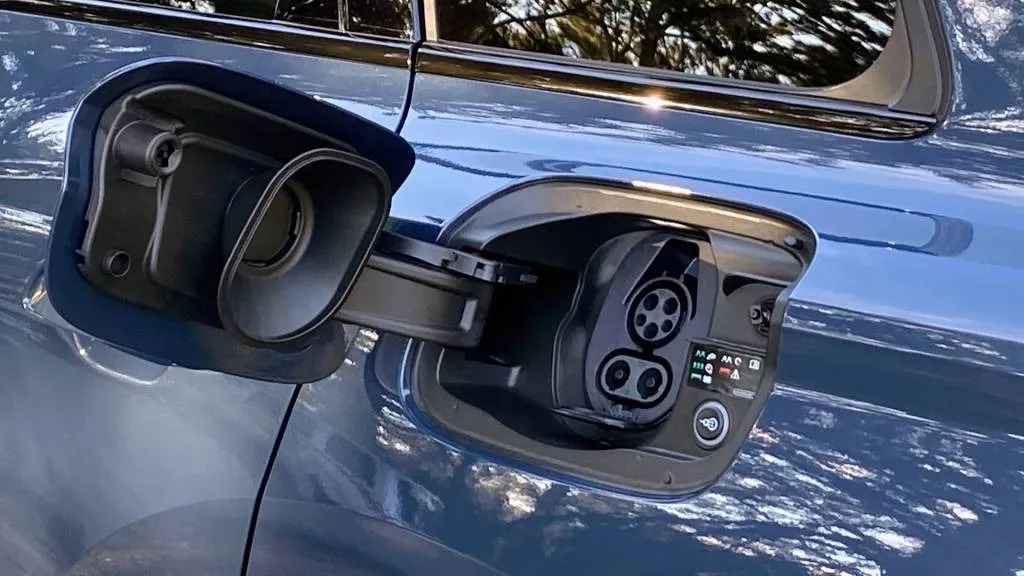
2025 Audi Q6 E-Tron
Audi Q6 E-Tron aims for middle, makes it lux
With them, the Q6 E-Tron does indeed slot right into the heart of Audi’s lineup—especially right into the middle of its North American lineup. It’s about eight inches longer than the Q4 E-Tron and a foot shorter than the Audi Q8 E-Tron, but it ends up feeling nearly as big inside as the latter. And while its 187.8 inches of overall length and 113.7-inch wheelbase are only 3.5 and 2.7 inches greater than that of the Q5 gasoline SUV—with less than a couple inches extra in overall height and width—the Q6 feels almost a size larger.
Those packaging advantages over the Q5 are made possible by what the Q6 was built on. It’s the launch vehicle for Premium Platform Electric (PPE), a dedicated EV platform that didn’t allow for combustion-engine space and aimed for reduced component dimensions and weight, plus strong performance. Initially shared with the Porsche Macan Electric, PPE is set to be utilized by the Q6 Sportback and A6 sedan lineup, both on the way next year.
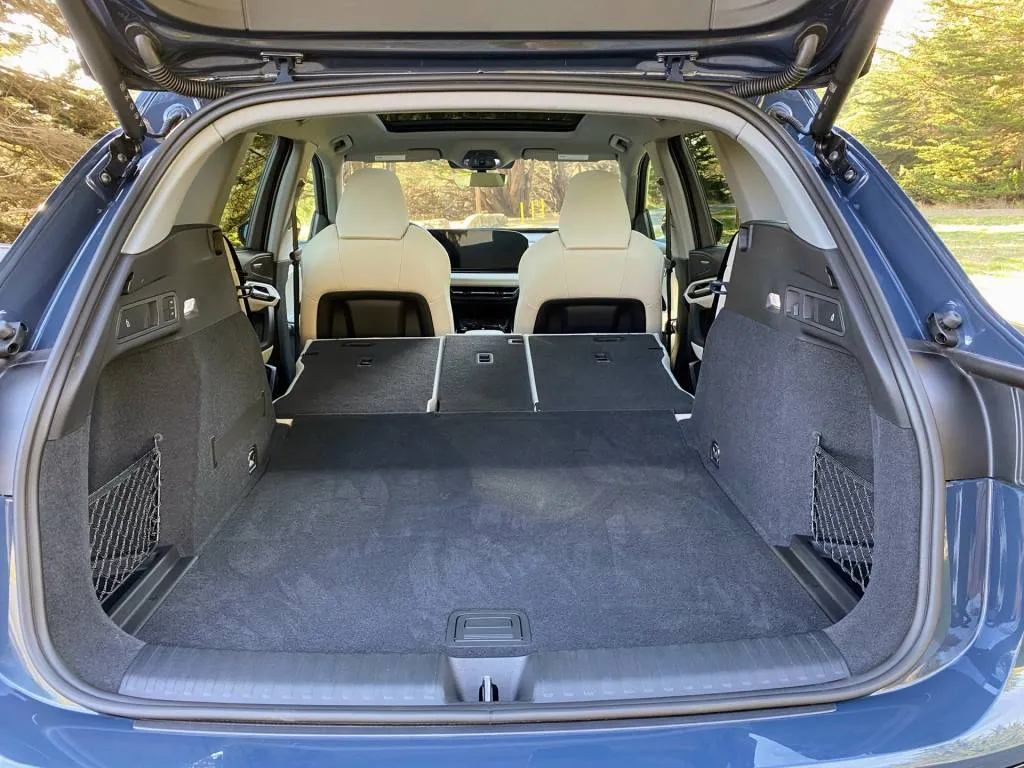
2025 Audi Q6 E-Tron
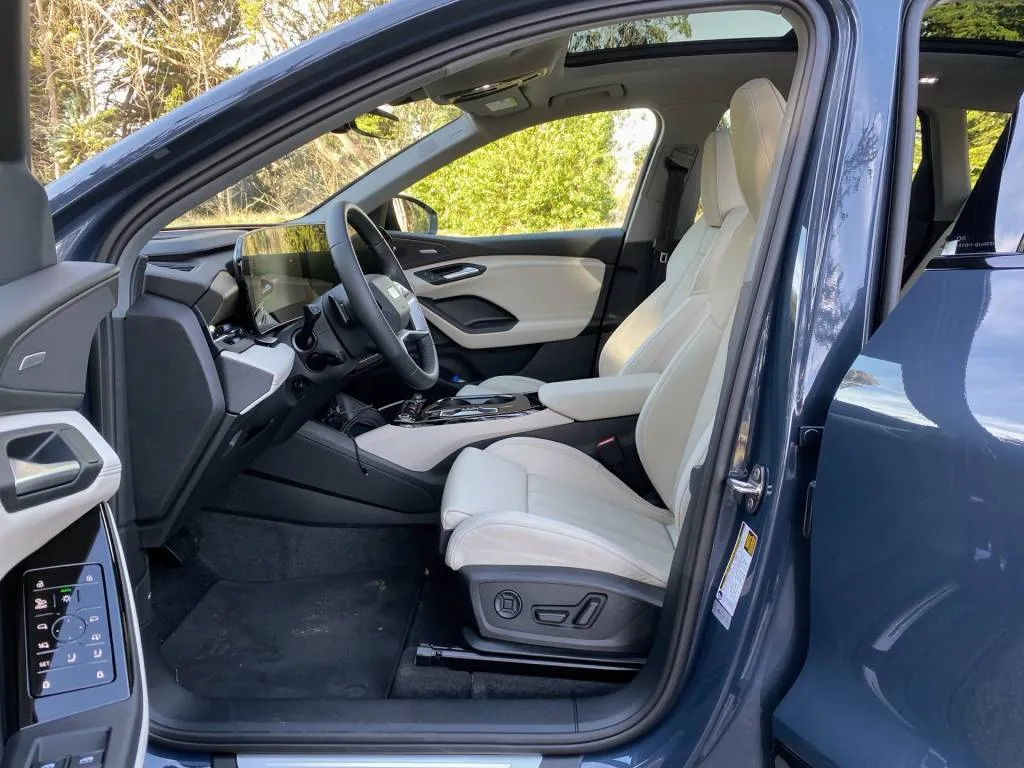
2025 Audi Q6 E-Tron
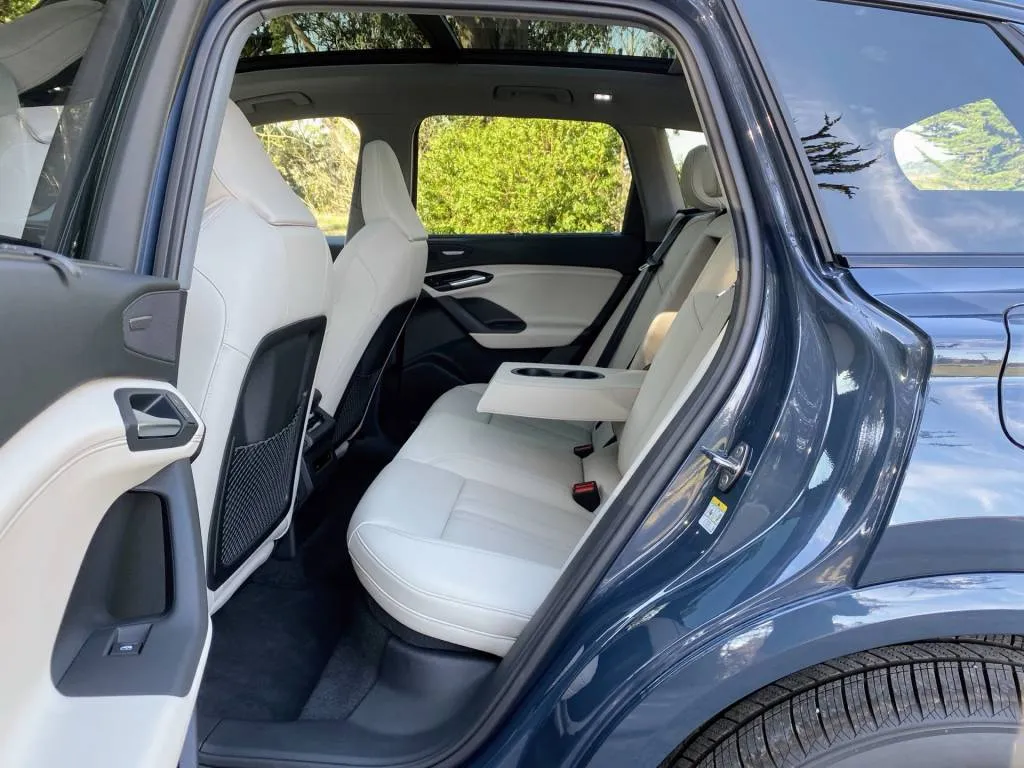
2025 Audi Q6 E-Tron
The packaging isn’t all perfect. If there’s a flaw here it’s that the rear door cuts are a little too short. While it means a little wedging for taller folks to get in (or a smaller space for leaning in on tots), there was plenty of space for this 6-foot-6 beanpole to sit behind myself.
The floor is low, signaling some smart packaging choices with the battery pack, and there’s a 2.3-cubic-foot frunk that’s about the right size for a large daypack or carry-on—or stashing your mobile charge cord. In back, you get 30.2 cubic feet of cargo space with the rear seatback up, or 60.2 cubic feet with them flipped forward—a significant amount more than the Q5’s 25.9 and 54.1 cubic feet.
Sign up for Newsletter
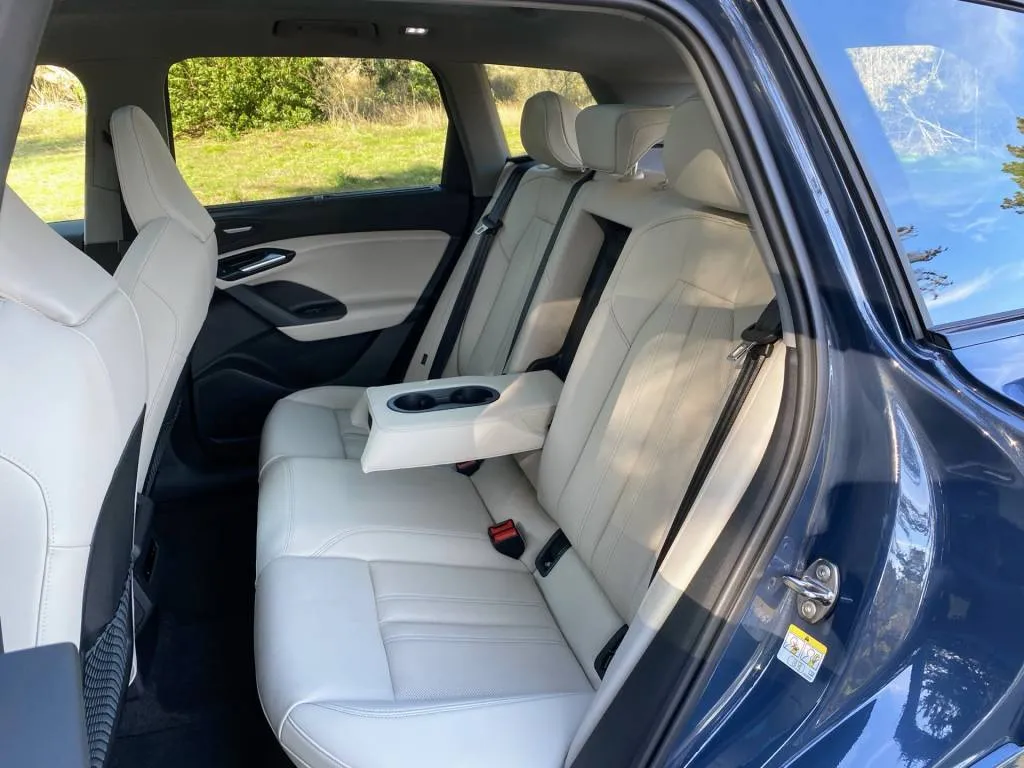
2025 Audi Q6 E-Tron
Q6 E-Tron batteries, motors, and more
What’s underneath? Keeping the battery pack modestly sized was a great start. Adding up to 100 kwh gross, or 94.4 kwh usable, it’s configured around 12 modules and 15 prismatic cells per module—for a total of 180 cells. It’s less complex versus the Q8 E-Tron’s 36 modules and 432 total cells, and the new pack allows individual modules to easily be replaced.
All models have a permanent-magnet motor unit at the rear wheels, and versions with quattro all-wheel drive get an induction motor at the front wheels. That essentially allows them to switch off the front motor, without drag, in cruising and light coasting situations, and weight savings and silicon carbide power electronics save weight and energy here, too.
While the battery capacity may be the same, Audi is using two different EV battery cell chemistries, from two different global suppliers—Samsung SDI and CATL. Their lithium nickel cobalt aluminum oxide (NCA) and nickel manganese cobalt (NMC) cells, due to slight variations optimizing the charge, get to 80% in 22 or 21 minutes, respectively—with quattro and SQ6 versions getting the NMC cells for their slightly better tolerance of heat in performance situations.
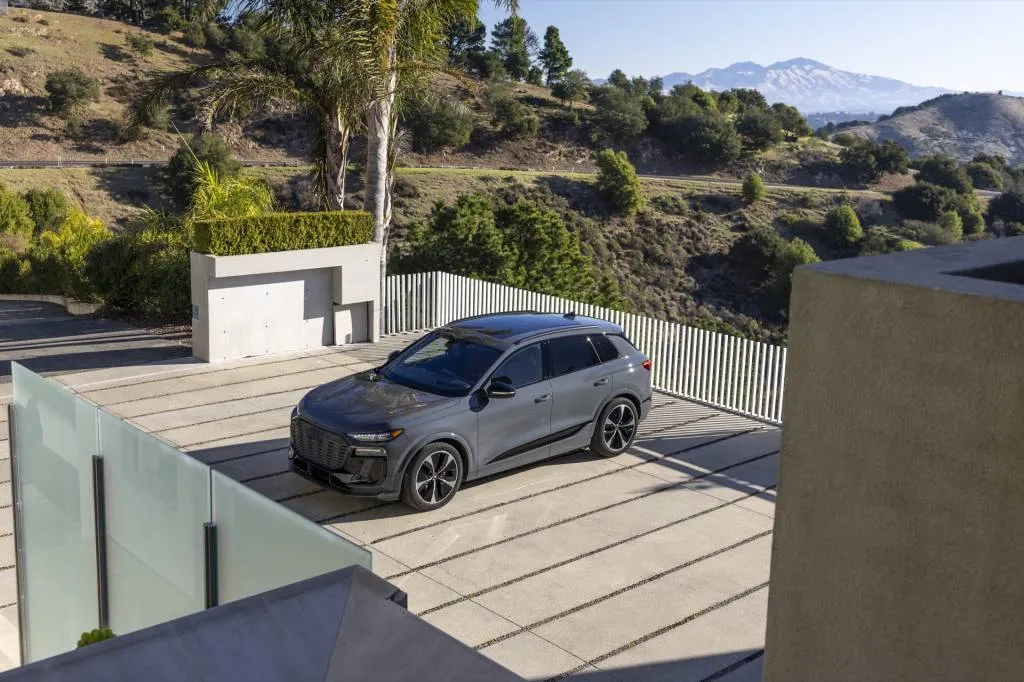
2025 Audi SQ6 E-Tron
Q6 E-Tron charging, brake regen
Fast-charging peaks at 260 and 270 kw, respectively, for these packs, with the 350-kw CCS DC fast-charging connectors that are increasingly common in the U.S. An adapter for Tesla NACS connectors is set to arrive in the next year. On DC fast-charging equipment limited to less than 800 volts—like much of the Tesla Supercharger network at present—Audi’s enabled 400V charging at a peak around 135 kw, by running the pack as two parallel 400-volt packs, allowing that 10-80% charge in around 35 minutes. Audi says that with a predictive thermal management system and battery management controller developed for this platform, fast-charges will be quicker and more efficient, and it’s planning to add a manual preconditioning setting for the U.S. (to allow for stations that aren’t yet in route planning, for instance).
For home charging, by the way, the 9.6-kw onboard charger allows you to tap into charge ports on either side of the vehicle (DC only on the driver’s side), and with a home charge connector at that power level, on a 50-amp circuit, a full charge should take no more than 10 hours.
The Q6 E-Tron packs a lot of energy back away to the battery pack every time you slow or stop; but it’s a different approach than what you’ll find in many other EVs. In its default settings, the Q6 lineup likes to glide when you lift off the accelerator, unless you deliberately select other settings at each key cycle. Audi points out that its stepped up the actual brake regeneration that you tap into when stepping on the brake pedal, to a maximum of 0.30 g, a level that many stops only use the friction pads the past few feet.
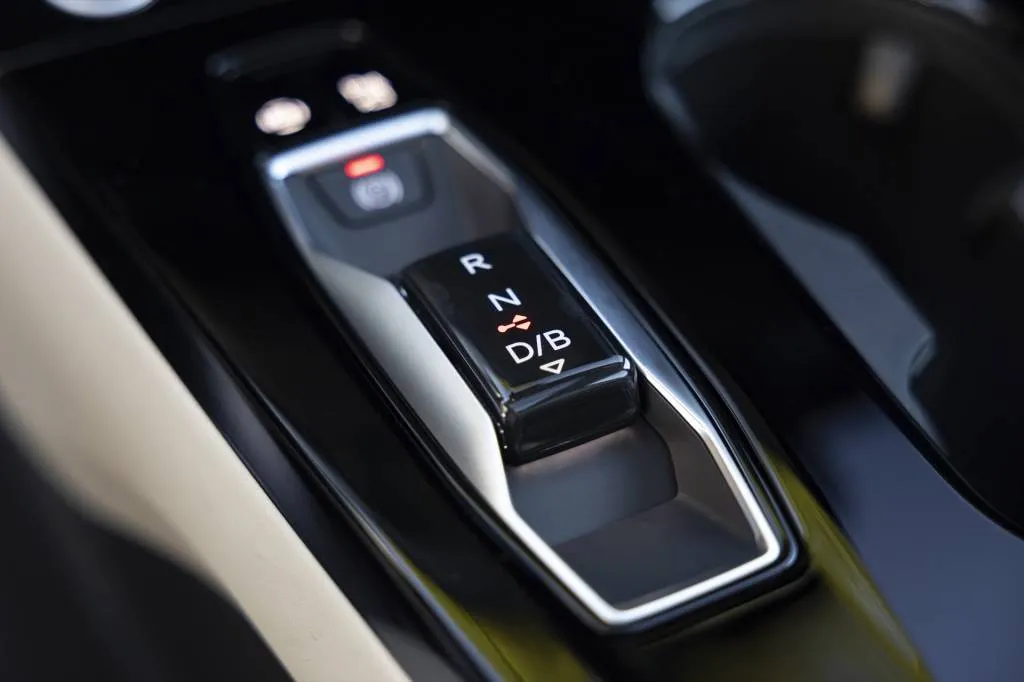
2025 Audi Q6 E-Tron
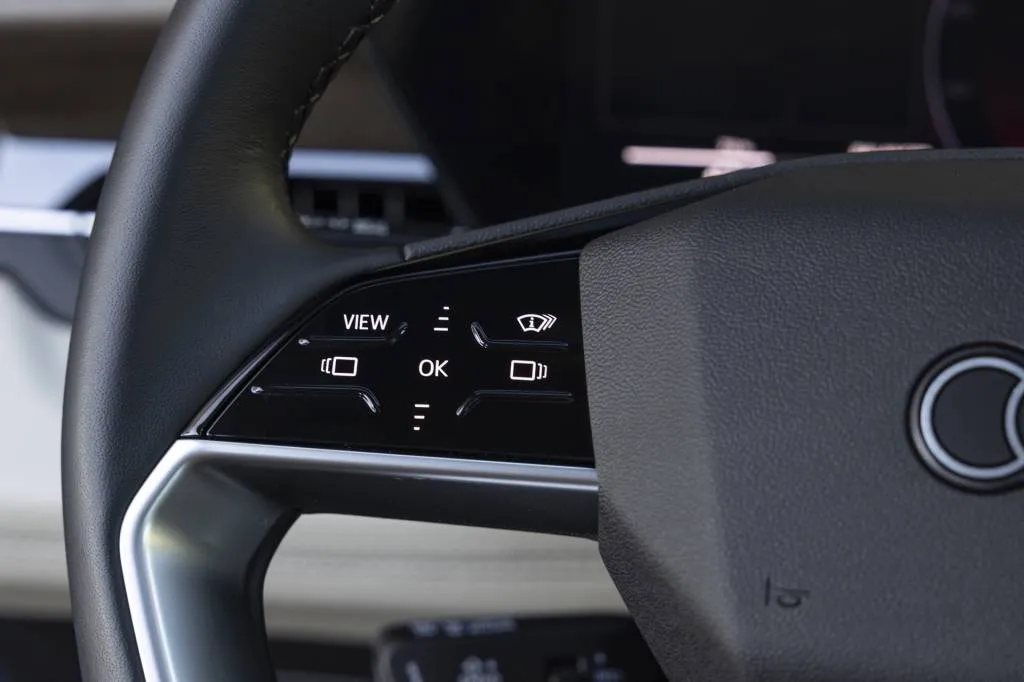
2025 Audi Q6 E-Tron
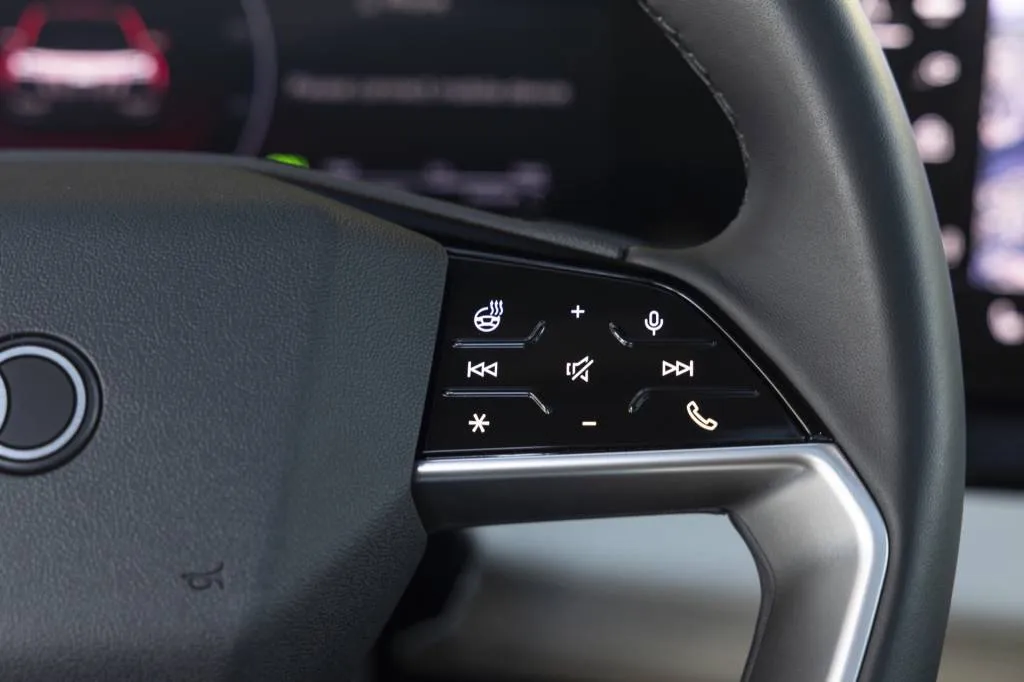
2025 Audi Q6 E-Tron
Shift to ‘D’ and the default setting takes you to an Auto deceleration mode that is a bit of a black box. It taps into inputs from the forward-facing camera, including the distance to vehicles ahead, as well as traffic and navigation data, making decisions about the curves along the road ahead—but arriving at unpredictable levels of regen that aren’t confirmed on the dash as you lift off the accelerator. Attempting to glide around a roundabout, for instance, warranted an unexpected ramp-up in regen.
You do have choices, though, and it’s the way to go. From ‘D’ with the steering-wheel paddles you can click through levels 0, 1, and 2, ranging from a flat-neutral coast, to 0.06 g (about like a gasoline car in ‘D’), to 0.15 g (think downshifting one gear). Select ‘B’ on the very odd shift selector—one of my peeves with this vehicle—and you dial up a completely different personality, with a full 0.25 g of regen when you lift off the accelerator.
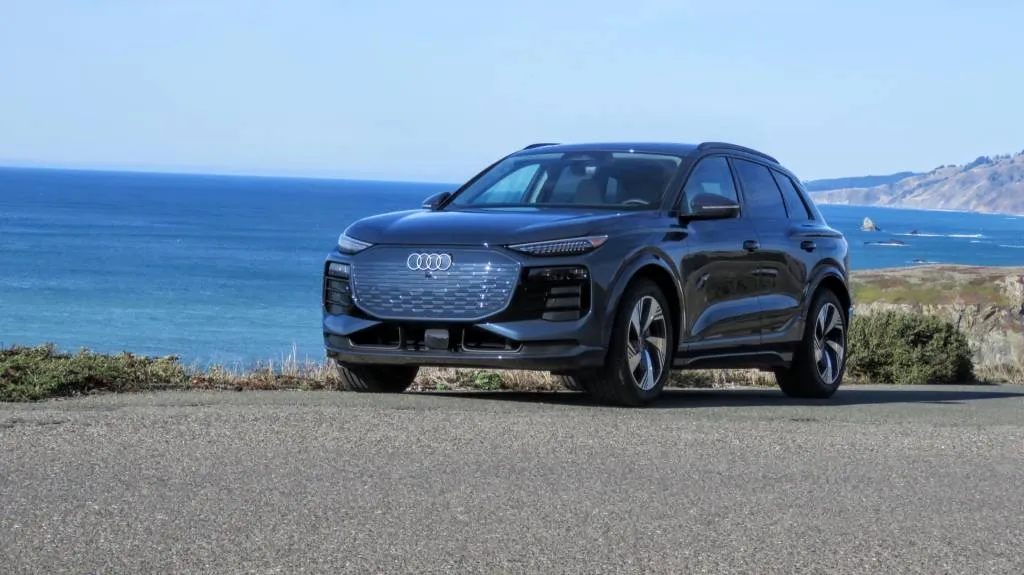
2025 Audi Q6 E-Tron
Audi Q6 E-Tron price and value
The 2025 Audi Q6 E-Tron quattro we spent much of the day with started at $67,095, including the $1,295 destination fee, and added the $6,800 Prestige package, $1,300 Warm Weather package (leather upholstery, cooled front seats, Bang & Olufsen audio), and $1,000 20-inch wheel package. That brought the total as tested to $76,195.
The quattro is right in the middle of the lineup, and it makes 356 hp in its launch mode and can get to 60 mph in 4.9 seconds. Rear-wheel-drive Q6 E-Tron versions make 322 hp and take 6.3 seconds. SQ6 E-Tron bump power to 509 hp and can get from 0-60 mph in 4.1 seconds.
The Prestige package, which I didn’t test a Q6 E-Tron without, adds two features that might change the fundamental feel of the vehicle: an adaptive air suspension, and acoustic glass in front.
To those two points: The Q6 E-Tron doesn’t feel tuned like a performance vehicle, and we noted a fair amount of pitchiness that got in the way of backroad poise. This isn’t a vehicle that invites driving roads. Despite all the weight-saving measures in the propulsion system, this vehicle weighs nearly 5,300 pounds—but the air suspension and buttoned-down damping do help calm big body motions under hard acceleration and strong braking, making it feel very confident overall.
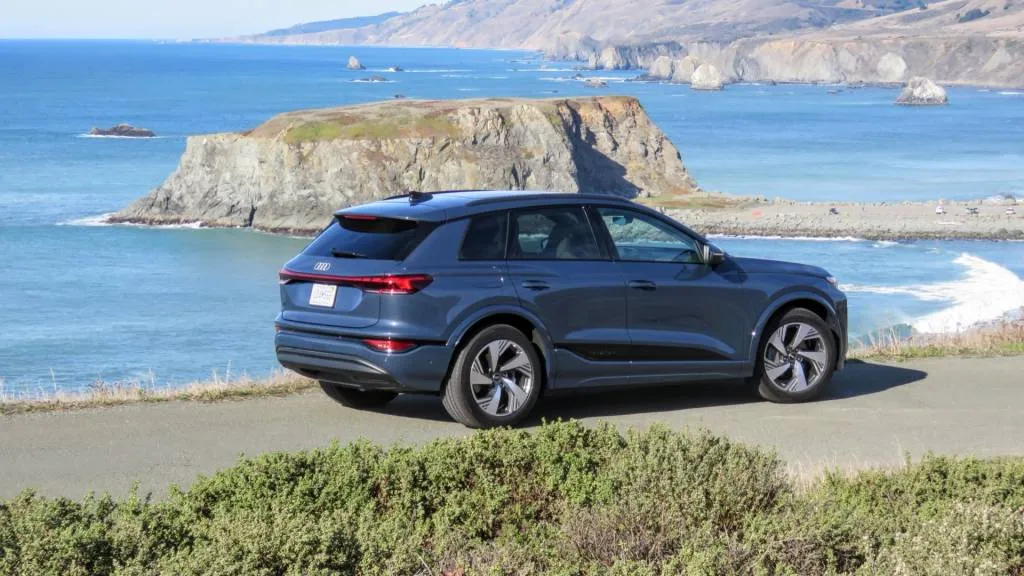
2025 Audi Q6 E-Tron
But as I note in a companion review of the 2025 Audi SQ6 over at Motor Authority, what amounts to a collective set of tuning and hardware differences amounts to a very different-feeling vehicle that I actually enjoyed driving much more, while only modestly more expensive and less efficient.
Q6 E-Tron Prestige versions also get acoustic front glass, and it’s hard to tell what additional noise this helps quell, as the Q6 E-Tron is very, very quiet inside—so much that it made us question why Audi has three simulated propulsion levels inside, with none of them completely off.
Q6 E-Tron family gets all-new interface
The Prestige package also includes some head-turning personalized OLED exterior lighting, plus a noteworthy piece of technology in front of the passenger—a 10.9-inch front passenger display, with an active privacy filter, that lets the passenger view, communicate, or play DJ.
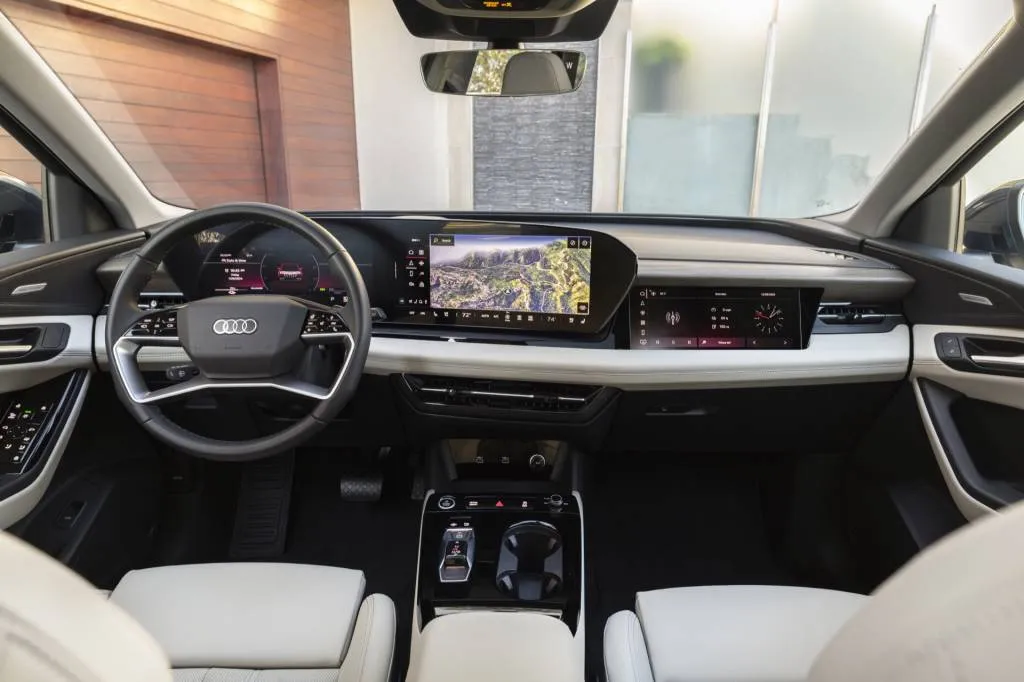
2025 Audi Q6 E-Tron
It’s all part of a revamped interface the brand is calling the Audi Digital Stage, wrapping a 11.9-inch configurable cockpit screen with a 14.5-inch OLED touchscreen in a curved panoramic design, as well as an augmented reality head-up display that seemed to jam a lot of info in front of the driver (we turned it off, but appreciated the directional lighting within the dash. It’s shifted seemingly all of the climate controls into the screen area, but over the course of a day’s drive I found most of the controls, with a basic menu of icons on the left rail signifying items like sound, navigation, phone, and the like, quite intuitive.
Audi has also added a new AI-informed digital assistant that can perform some tasks (like turning down the very strong heated seats) flawlessly—and it doesn’t appear to need a data connection for everything.
While the Q8 E-Tron (and its E-Tron SUV predecessor) was among the first electric SUVs on the market—a full year before the Tesla Model Y—the brand has shown it’s learned and improved in nearly every respect with the Q6 E-Tron and its underlying PPE platform. For those holding out for better-driving, longer-range, faster-charging luxury EVs, they’re here.

Porsche Macan Electric: Green Car Reports Best Car To Buy 2025 finalist
- Macan Electric builds on Taycan’s 800V tech
- Leads a new generation of very quick-charging EVs
- Up to 315 miles of range, 21 minutes from 10-80%
The Porsche Macan Electric is brimming with technology and engineering innovation that will help transform the middle of the luxury market, not just the fringes. That’s why it’s one of Green Car Reports’ Best Car To Buy 2025 finalists
As other brands have shuffled toward EVs in fits and starts, Porsche hasn’t wavered in its effort to remake nearly all its lineup around EVs, and redesigning a next-generation Macan, its top seller, without a combustion engine has been an especially bold move.
Porsche’s sharp focus on electrifying its lineup started with the Mission E concept nine years ago, resulting in the production Porsche Taycan, sandwiched between the 911 and Panamera. Fully electric, and arriving for the 2020 model year, it was one of our Best Car To Buy 2020 finalists.
Sign up for Newsletter
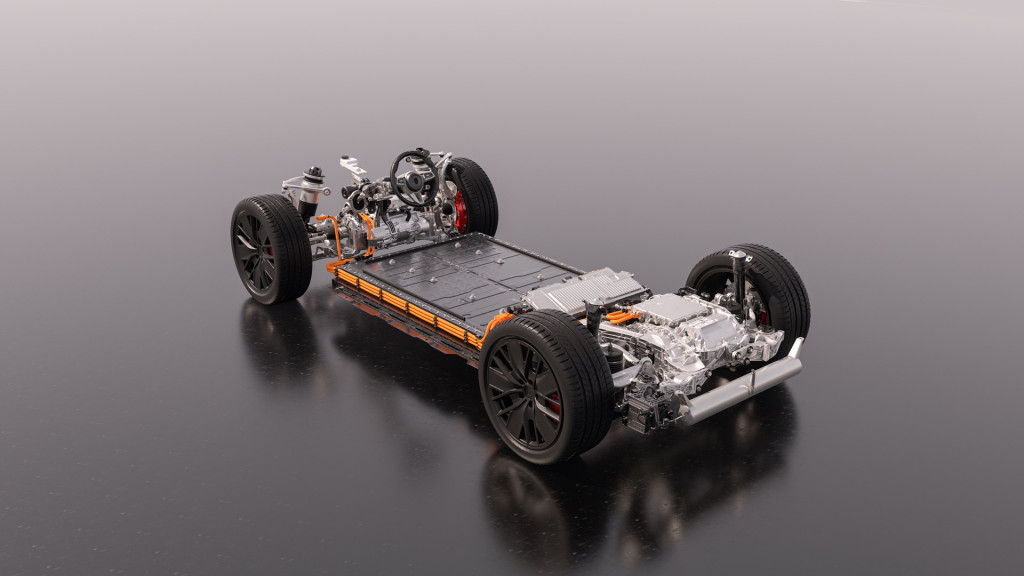
PPE platform for VW Group, developed by Porsche/Audi
This past year, the 2025 Porsche Taycan has received all sorts of improvements to gain efficiency, boost performance, and make good on the mission. But the Macan Electric’s Premium Platform Electric (PPE) takes all Taycan’s tech in perspective—by allowing easier scalability, and simplifying for a higher level of mass production. It all shows that the electric version can be more space-efficient, comfortable, and luxurious, in addition to all those other clean-energy qualities.
The Macan and its PPE platform-mates, including the Audi Q6 E-Tron, evolve the motor tech and carry over the Taycan’s 800-volt basis for battery and propulsion tech. However, it’s built with a 100-kwh battery pack that reduces complexity and shifts to a smaller number of prismatic cells and improved thermal regulation—enabling a 10-80% DC fast-charging time of as little as 21 minutes. With an EPA range rating of up to 315 miles, and 288 miles in even the top Macan Turbo, that’s not a lot of road-trip time spent charging.
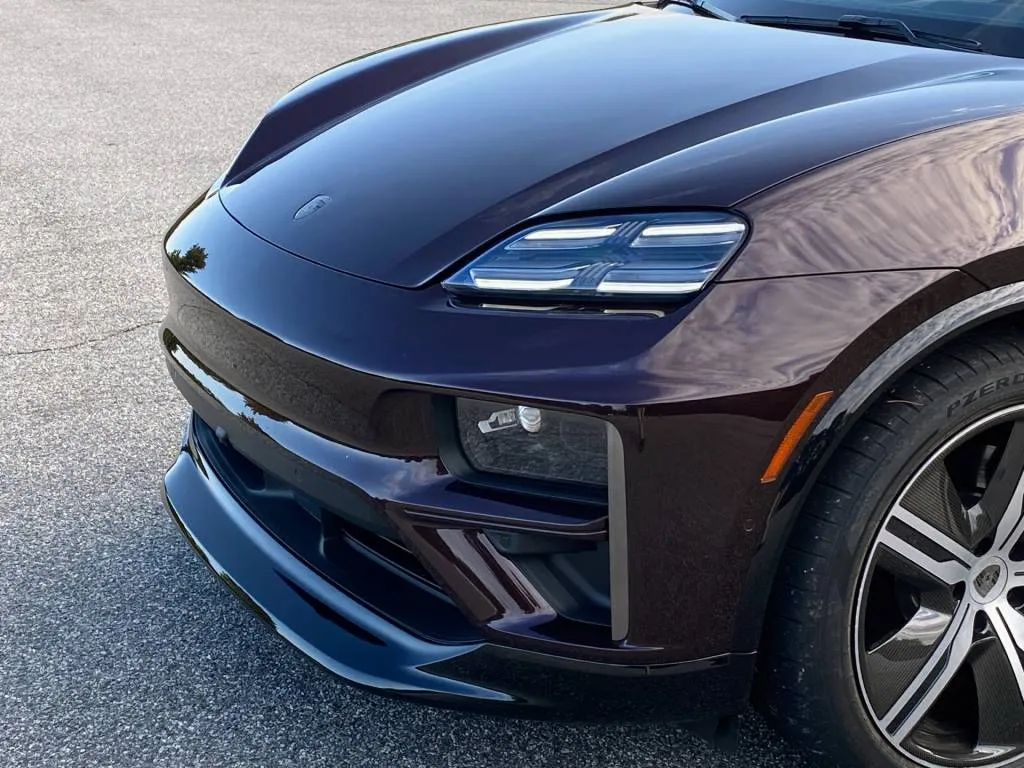
2024 Porsche Macan EV
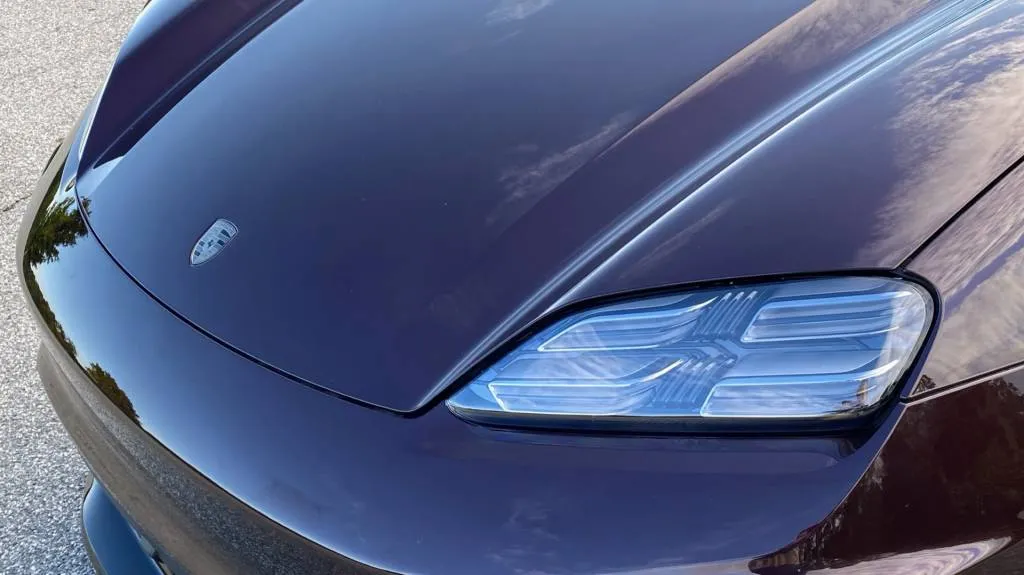
2024 Porsche Macan EV
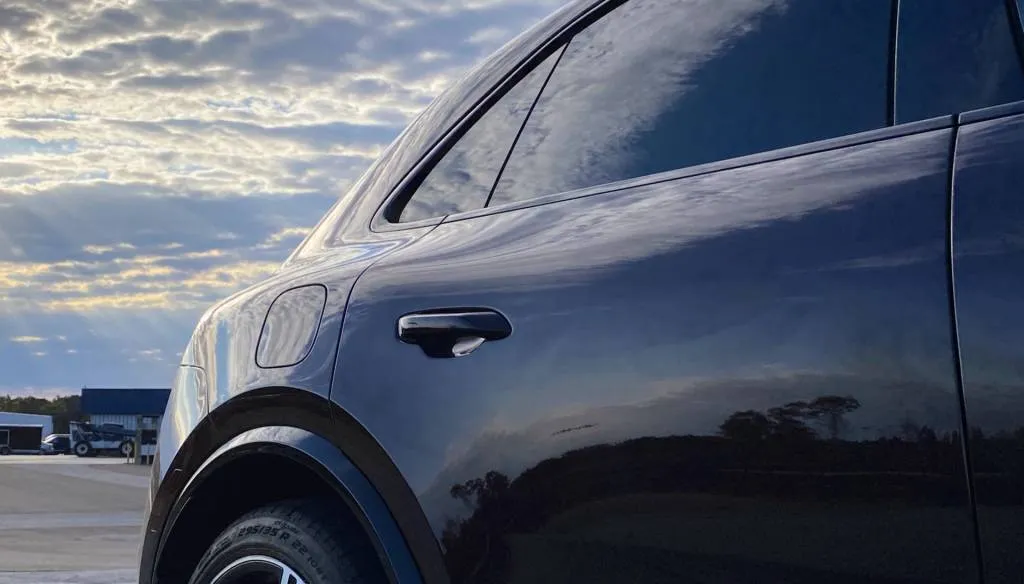
2024 Porsche Macan EV
So far, the German luxury establishment has been missing out on faster 800-volt charging, but the Macan and PPE shepherd it out to the 2025 Audi Q6 E-Tron and SQ6 E-Tron, also arriving now, and next year to the Audi A6 E-Tron hatchback and more.
The Macan Electric’s thermal systems and performance credentials were well proven by our editorial team during Best Car To Buy testing at Georgia’s Atlanta Motorsports Park, where the battery, brakes, or motors never overheated, despite this performance SUV’s curb weight of nearly 5,400 pounds—although the Pirelli P Zero Corsa summer performance tires were definitely worse for wear.
Sign up for Newsletter
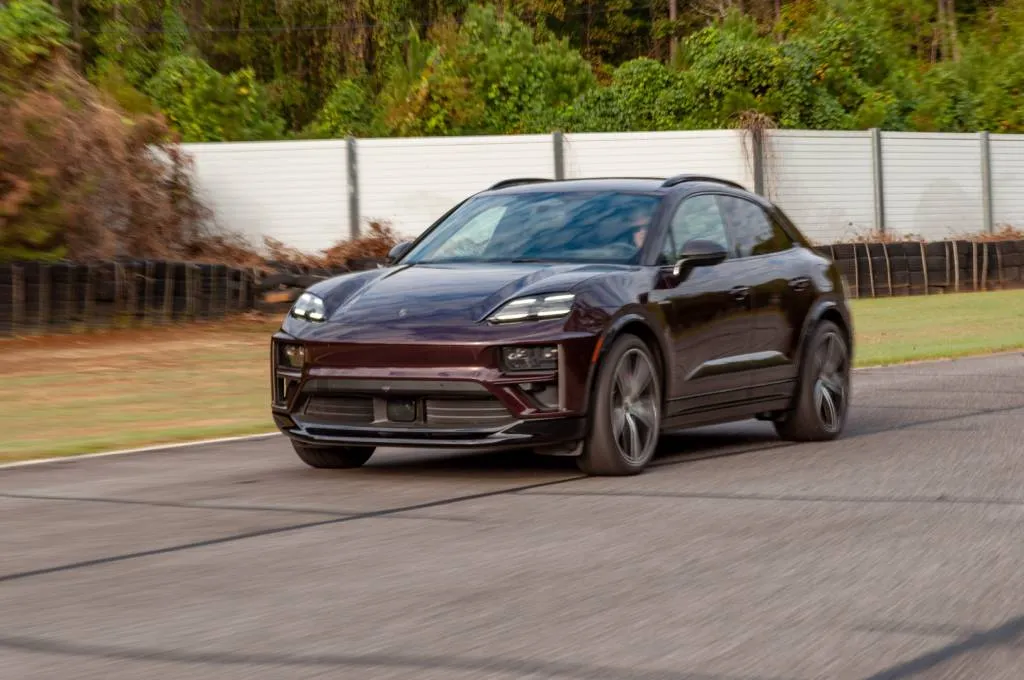
2024 Porsche Macan EV
The Porsche Macan Electric is offered at a range of different power levels, including the 335-hp Macan, 402-hp Macan 4, the 509-hp Macan 4S, and the 630-hp Macan Turbo—with the latter achieving a 0-60 mph dash in just 3.1 seconds. An air suspension and adaptive damping are included, allowing the Macan to raise or lower its ride height based on the drive mode, and the PPE underpinnings for the Macan Electric also include a new front suspension geometry plus a steering gear that’s rigidly attached to the structure for better steering feedback. On the street and on the track alike, the Macan’s rear-wheel steering is its secret weapon, allowing for better maneuverability in tight corners and better stability in high-speed maneuvers.
Fun track time aside, it’s the Macan Electric and the platform it’s built on that will help prove that EVs don’t have to involve compromise, which can help elevate this technology to a broader market.
It’s not “mission complete” yet, but this bigger mission is just starting.
BMW Panoramic iDrive: Next-gen user interface set for 2025 CES
 BMW to Present the New BMW Panoramic iDrive User Interface During 2025 CES Actor and comedian Tim Meadows has been hired to help present the user interface BMW Panoramic iDrive will first feature in BMW’s Neue Klasse family of EVs, the first member of which is due in 2025 BMW will use the 2025 Consumer Electronics Show next month in Las Vegas to…
BMW to Present the New BMW Panoramic iDrive User Interface During 2025 CES Actor and comedian Tim Meadows has been hired to help present the user interface BMW Panoramic iDrive will first feature in BMW’s Neue Klasse family of EVs, the first member of which is due in 2025 BMW will use the 2025 Consumer Electronics Show next month in Las Vegas to…
Chevrolet Equinox EV: Best Car To Buy 2025 finalist
 2025 Chevy Equinox EV LT has an 85-kwh battery pack, 319-mile range, and costs $34,995, including destination Equinox EV RS AWD costs $49,090, 307-mile range Dual-motor AWD adds $3,300 to RS grades and $5,300 to LT grades There’s been so much talk and so many promises about an affordable electric vehicle, but the only affordable EVs have been…
2025 Chevy Equinox EV LT has an 85-kwh battery pack, 319-mile range, and costs $34,995, including destination Equinox EV RS AWD costs $49,090, 307-mile range Dual-motor AWD adds $3,300 to RS grades and $5,300 to LT grades There’s been so much talk and so many promises about an affordable electric vehicle, but the only affordable EVs have been…

2024 Cadillac Lyriq misses Top Safety Pick rating
- Eight EVs have earned Top Safety Pick+ ratings from the IIHS
- The Cadillac Lyriq was not one of those EVs
- Mazda and Volvo PHEVs joined the list of Top Safety Pick+ winners
A few more electric vehicles and plug-in hybrids earned the industry’s toughest safety award with a Top Safety Pick+ rating in the year’s final round of testing by the IIHS, but one model missed out.
The IIHS toughened requirements to earn the Top Safety+ award and second-tier Top Safety Pick award this year, but eight EVs achieved Top Safety Pick+ status in the first round of awards announced in September, with a further nine models earning the lower Top Safety Pick award.
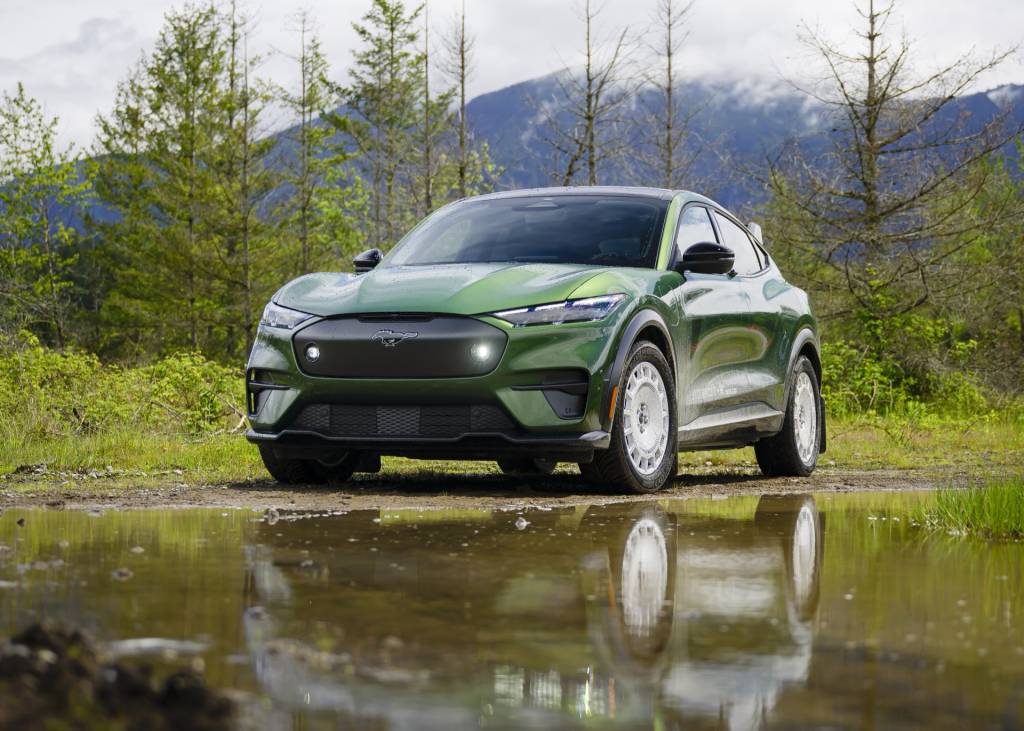
2024 Ford Mustang Mach-E Rally
On Tuesday the IIHS announced that, after an additional round of testing meant to accommodate models that hadn’t yet undergone the updated moderate front-overlap crash test or had been changed to achieve better performance, the 2024 Ford Mustang Mach-E and 2025 Rivian R1S have joined the list of Top Safety Pick+ winners.
Sign up for Newsletter
Plug-in hybrid versions of the 2025 Mazda CX-70 and 2024 and 2025 Volvo XC90 are also newly minted Top Safety Pick+ winners. No new EVs or plug-in hybrids joined the ranks of Top Safety Pick winners this time around.
To qualify for either award, vehicles now need the highest “Good” rating in the small front-overlap and updated side crash tests, an “Acceptable” or “Good” rating in the pedestrian front-crash prevention tests, and headlights with those same ratings across all trim levels. The latter requirement tripped up the 2024 Cadillac Lyriq, which received a “Poor” headlight rating.
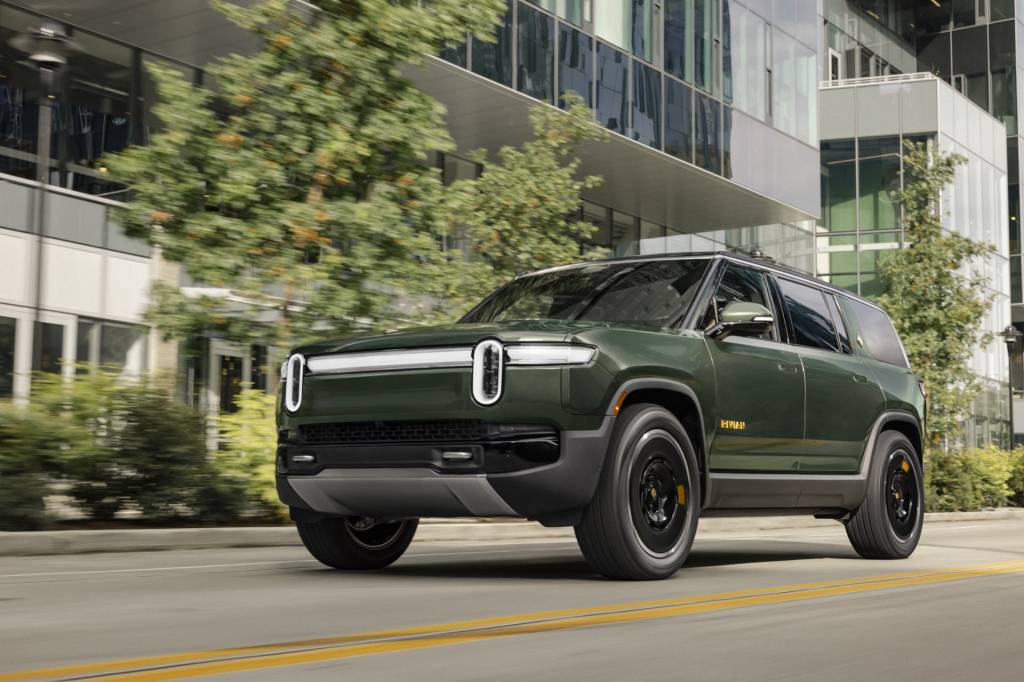
2025 Rivian R1S
Introduced for the 2023 model year, the Lyriq sees minor changes for 2025, as well as a price cut, but nothing that would likely impact its headlight ratings. That being said, automakers sometimes work with the IIHS to address issues found in the organization’s testing, so Cadillac could make changes that filter in later in the model year.
The Top Safety Pick+ award also requires a “Good” or “Acceptable” score in the updated moderate front-overlap test, which adds a second crash test dummy behind the driver and looks closer at rear-seat safety. A “Good” rating in the original version of this test is enough for the lower-tier Top Safety Pick award.

2025 Toyota bZ4x price drops by up to $6,000
- The 2025 Toyota bZ4x costs $38,465
- Toyota gave the bZ4x a $6,000 price cut; Limited trims are now $5,380 less expensive
- EPA range ratings should max out at 252 miles
Expected to arrive at U.S. dealerships early next year, the 2025 Toyota bZ4x gets a price cut, as well as more driver-assist features and a new Nightshade Edition grade.
The base price of the entry-level XLE is now $38,465 with the $1,395 destination charge. That is $6,000 lower than the equivalent 2024 model.
The Limited grade now starts at $43,195 with destination, which is a $5,380 price cut. Limited models replace the XLE’s 18-inch wheels with 20-inch rolling stock, and add convenience features like power front seats with heating and cooling. For 2025, traffic jam assist, lane change assist, and front cross-traffic alerts are now standard on Limited models as well.
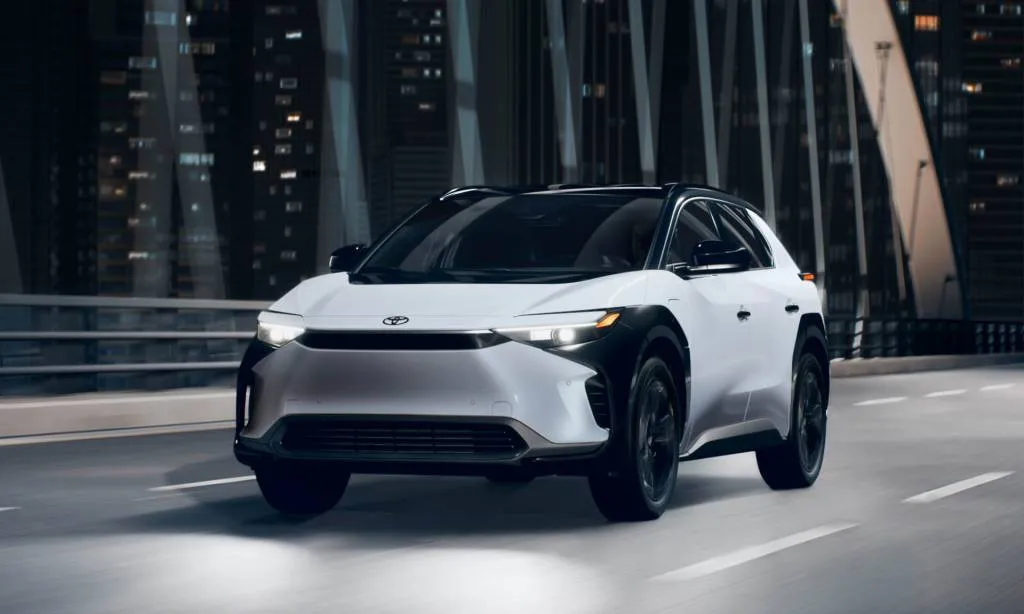
2025 Toyota bZ4x
Also new for 2025 is a Nightshade Edition that brings the blackout treatment previously seen on Toyota hybrids to the all-electric bZ4X for $41,815 with destination. Based on the XLE grade, Nightshade models add black 20-inch wheels, as well as a black rear spoiler, door handles, and badges, on the outside, and red contrast stitching on the inside.
A single-motor front-wheel-drive powertrain rated at 201 hp remains standard. Dual-motor all-wheel drive, with a bump to 214 hp, is a $2,080 option on the XLE and Limited grades, and standard on the Nightshade. Single-motor models continue with a 71.4-kwh battery pack using cells from Panasonic, while dual-motor models have a 72.8-kwh pack with CATL cells.
Toyota expects unchanged EPA range ratings, maxing out at 252 miles for single-motor XLE models. That drops to 228 miles for dual-motor XLE models. With their bigger wheels, Limited models should remain at 236 miles with the single-motor powertrain and 222 miles with the dual-motor powertrain. The latter number also applies to Nightshade models.
Introduced for the 2023 model year, the bZ4x is a virtual twin of the Subaru Solterra, and is also closely related to the Lexus RZ. It remains the only EV in Toyota’s U.S. lineup, but that will change soon as the automaker looks to start U.S. EV production within the next two years.
Review: 2025 Nissan Armada Pro-4X gets stuck but overcomes
 Armada Pro-4X comes with an air suspension, a locking rear differential, skid plates, and all-terrain tires That gear might not be enough get the full-size SUV through the muckiest Midwestern mud The twin-turbo V-6 that replaces the V-8 is a solid engine The mud could swallow the boot off of your foot. Two days of cold winter rain turned the…
Armada Pro-4X comes with an air suspension, a locking rear differential, skid plates, and all-terrain tires That gear might not be enough get the full-size SUV through the muckiest Midwestern mud The twin-turbo V-6 that replaces the V-8 is a solid engine The mud could swallow the boot off of your foot. Two days of cold winter rain turned the…
Hyundai Kona vs. Tucson: Compare Crossover SUVs
 Hyundai Kona vs. Tucson: On paper the matchup seems unusual, since both vehicles come from the same South Korean automaker. But with lots of standard equipment, a great warranty, and fuel-efficient and high-performance editions, it’s easy to see the attraction to both the Tucson and the Kona. While the smaller 2025 Hyundai Kona has a…
Hyundai Kona vs. Tucson: On paper the matchup seems unusual, since both vehicles come from the same South Korean automaker. But with lots of standard equipment, a great warranty, and fuel-efficient and high-performance editions, it’s easy to see the attraction to both the Tucson and the Kona. While the smaller 2025 Hyundai Kona has a…
Michelin and Brembo are reducing braking distances with AI
 Michelin and Brembo have pooled their talents in the area of artificial intelligence and other smart technologies to help make vehicles safer, especially when it comes to reducing braking distances. Announced on Dec. 12, the partnership is focused on the exchange of real-time data between Michelin’s tire monitoring software and Brembo’s Sensify…
Michelin and Brembo have pooled their talents in the area of artificial intelligence and other smart technologies to help make vehicles safer, especially when it comes to reducing braking distances. Announced on Dec. 12, the partnership is focused on the exchange of real-time data between Michelin’s tire monitoring software and Brembo’s Sensify…

Audi Q8 E-Tron production ends in February
- Production of the Audi Q8 E-Tron ends Feb. 28
- It’s unclear if 2025 Q8 E-Trons will arrive in the U.S.
- Audi’s EV lineup will continue with the Q4 E-Tron, Q6 E-Tron, A6 E-Tron, and E-Tron GT
Audi will stop Q8 E-Tron production two months into the new year, bringing an end to the electric SUV that—in its original E-Tron form—ushered in Audi’s electric era.
First reported by Reuters, the factory in Brussels, Belgium, that builds the Q8 E-Tron will shut down by Feb. 28. Audi had been seeking to sell the Belgian plant, and a shutdown has seemed likely since November, when the automaker told Reuters that it had been unable to find a buyer. And Automotive News reported in July that the Q8 E-Tron might be on the chopping block.
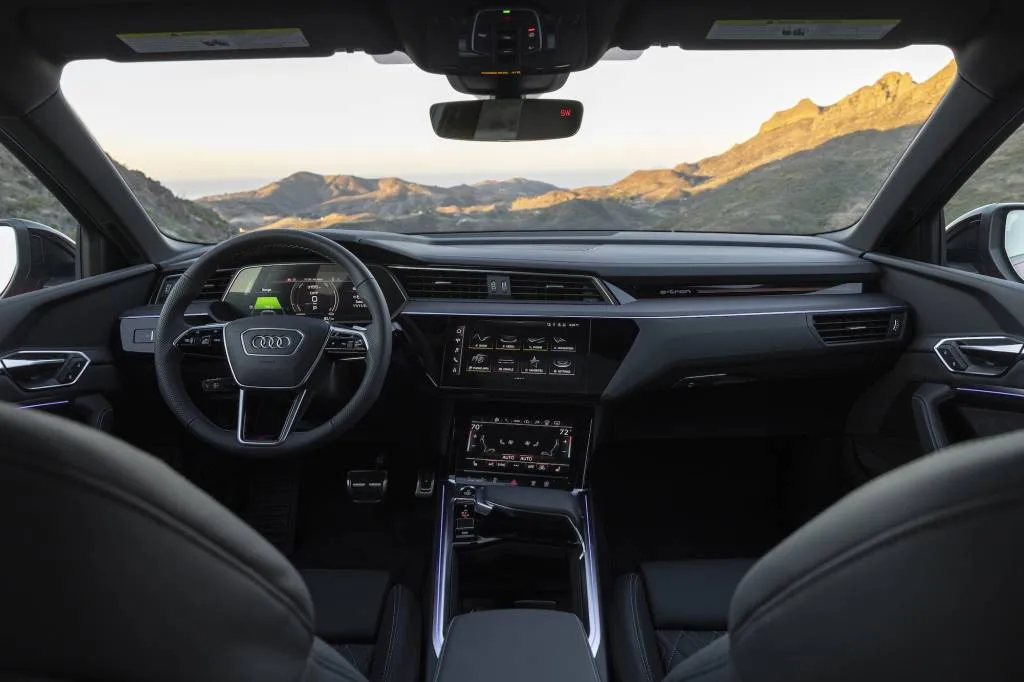
2025 Audi Q8 E-Tron
Now we know that the Q8 E-Tron is indeed on the way out, as production will not be shifted to another plant. While Audi has already announced 2025-model-year pricing, a spokesperson told Green Car Reports that all vehicles currently in the automaker’s U.S. inventory are 2024 models. The availability of 2025 models will depend on whether any remaining production is allocated to the U.S.
Sign up for Newsletter
Audi was only planning small changes to feature content for 2025, plus a $600 base-price bump to $76,095 (including a $1,295 destination charge).
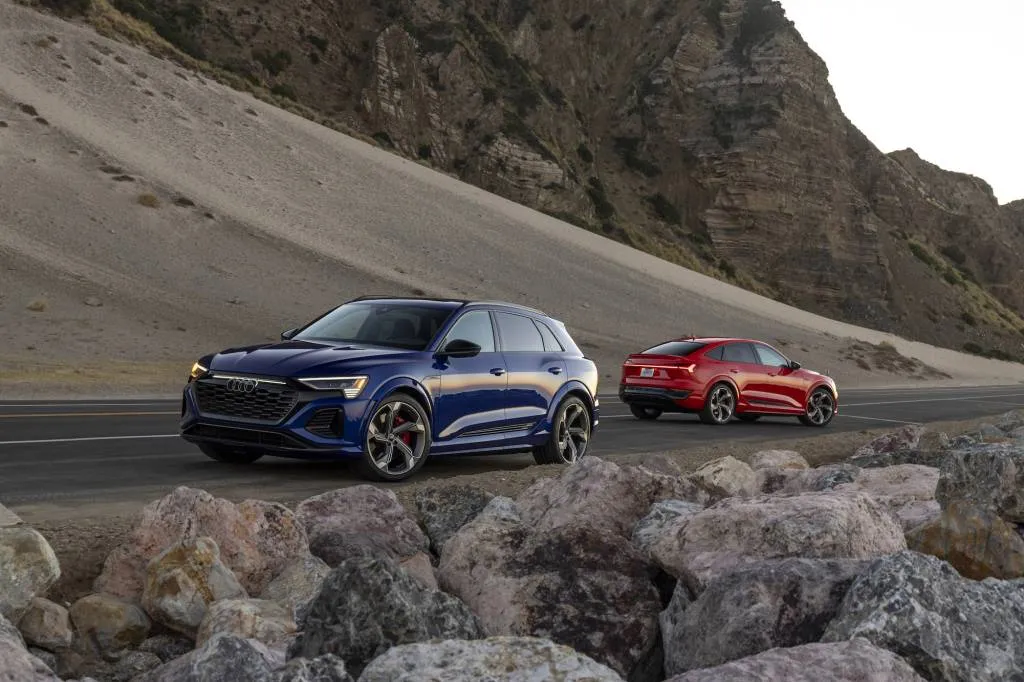
2025 Audi Q8 E-Tron
The Q8 E-Tron was only launched for the 2024 model year, as a heavy update of the Audi E-Tron, the automaker’s first volume EV. It carried over all the good things from the E-Tron—including good safety ratings—but with somewhat sharpened handling and more driving range. It achieved up to 300 miles of EPA range in sleeker Sportback form with the efficiency-focused Ultra Package, but that option was due to be discontinued for 2025, knocking range down to 272 miles.
While the Q8 E-Tron shares its MLB platform with gasoline models, Audi now has multiple dedicated EV platforms at its disposal. The entry-level Q4 E-Tron shares with MEB platform with Volkswagen EVs like the ID.4, the E-Tron GT is based on the same J1 platform as the Porsche Taycan, and the incoming Q6 E-Tron and A6 E-Tron use the same Premium Platform Electric (PPE) as the Porsche Macan EV. PPE will likely serve as the basis for Audi EVs going forward—including any potential replacement for the Q8 E-Tron.





